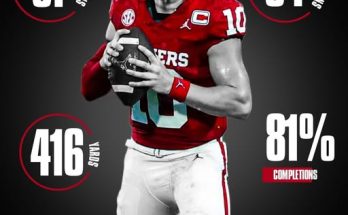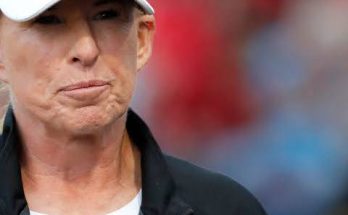In what would be a seismic shift in the NHL landscape, the New York Rangers have reportedly been linked to Edmonton Oilers superstar Connor McDavid ahead of his potential free agency in 2026. While the whispers have been faint and the details speculative, the fact that McDavid’s name is surfacing in Rangers-related rumors is enough to electrify a hockey world always thirsty for a new narrative. These rumblings come on the heels of the Rangers acquiring J.T. Miller from the Pittsburgh Penguins—a blockbuster move that not only stunned many insiders but also gave a subtle clue that something far bigger could be brewing in Manhattan.
The Rangers, a franchise defined as much by its glamour as its tortured pursuit of a second Stanley Cup since 1994, have never shied away from pursuing the league’s biggest stars. From Mark Messier to Jaromir Jagr, from Henrik Lundqvist to Artemi Panarin, the team has a history of high-profile acquisitions designed to make bold statements. Linking themselves with Connor McDavid—who is, without question, the most electrifying player in the NHL today—would be a move that goes beyond a statement. It would be a nuclear announcement, the kind that reverberates through not only the league but all of professional sports.
The backdrop to all of this is critical. The Rangers just executed a significant trade to bring J.T. Miller back to New York. After his successful run in Vancouver and a surprising one-year stint in Pittsburgh alongside aging legend Sidney Crosby, Miller was lured back to Broadway in a move that had layers. He provides instant leadership, scoring depth, and a tough edge the Rangers have at times lacked. But in context, Miller’s acquisition could be about more than the immediate goal of chasing a Cup in 2025. It could also be part of a carefully calculated plan to create an environment McDavid would find both competitive and familiar, a team built not only to win but to serve as a platform for his transcendent talent.
To understand the gravity of McDavid even entertaining an exit from Edmonton, one must appreciate what he means to that franchise. Drafted first overall in 2015, McDavid was not just a promising player; he was the savior of a city that lives and breathes hockey. For years, he delivered individual brilliance while the Oilers as a team sputtered in the shadows of inconsistency, flawed roster-building, and playoff heartbreaks. The 2024-25 season, which ended in a heartbreaking Game 7 loss in the Stanley Cup Final to Florida, may have been his most painful yet. McDavid was nothing short of superhuman in that series, yet his excellence once again came up just shy of the ultimate prize.
It is this emotional weight—carrying a franchise, enduring the pressure, repeatedly falling just short—that makes the idea of him walking away less far-fetched than it would have seemed even a year ago. The Oilers will throw every dollar and every promise at him to keep him in Edmonton, but for a player of McDavid’s stature, legacy eventually transcends loyalty. If he believes the Oilers are not the best vehicle for his ultimate goal—multiple Stanley Cups—then leaving becomes not a betrayal but a necessity.
This is where the Rangers come in.
New York offers McDavid everything. The market, the media platform, the legendary status that only Madison Square Garden can bestow. From a branding standpoint, moving to New York could transform McDavid from merely the best hockey player in the world into a transcendent sports figure on par with global icons. And unlike past eras, this Rangers team is built not on hype but on legitimate, competitive promise.
The core is solid. Adam Fox is a perennial Norris Trophy candidate, Igor Shesterkin is an elite goaltender capable of winning any series on his own, and players like Alexis Lafrenière and Filip Chytil are entering their prime. If you add J.T. Miller’s veteran presence and then somehow slot McDavid into that equation, you’re not just building a Cup contender—you’re building a potential dynasty. The pieces are already on the board. The Rangers just need the king to complete the chessboard.
Of course, none of this happens in a vacuum. The NHL’s salary cap structure makes assembling superteams a challenge. But the Rangers’ front office, under GM Chris Drury, has been methodically positioning themselves for financial flexibility in 2026. Panarin’s contract ends after the 2025–26 season. Mika Zibanejad’s deal becomes more movable with each passing year. If McDavid signals even a whisper of openness to joining New York, the Rangers will move heaven and earth to make the math work.
The J.T. Miller trade also sends a signal to the rest of the league: New York is not standing still. Miller, a known commodity with strong ties to the Rangers’ system, represents a “win-now and win-later” kind of move. He fills a vital gap in the middle six, offers versatility across lines, and brings the kind of grit necessary for deep playoff runs. But his presence could also be part of a larger message—this team is being constructed not just for battles today, but for a future that could include the sport’s most valuable player.
There’s another layer to the Rangers-McDavid rumors that can’t be ignored: Sidney Crosby. McDavid has always been cast as Crosby’s heir, a quiet leader whose play speaks volumes, whose loyalty has never been in question. But with Crosby nearing the end of his career and the Penguins entering a slow rebuild, McDavid has fewer emotional ties to stay buried in the Canadian prairies. Crosby’s final years, while still productive, serve as a cautionary tale—superstars can waste their twilight years if the organization can’t match their level of excellence.
McDavid might be looking to avoid that fate. And if he is, New York would represent the most strategic escape route. The franchise offers not only history but opportunity. MSG is where legends are forged. A Cup in Edmonton would be historic; a Cup in New York would be immortal.
The ripple effects of McDavid joining the Rangers would be staggering. Ratings would skyrocket. National broadcasts would revolve around Rangers games. Hockey would get a jolt of mainstream attention in America. For a league constantly chasing relevance in crowded sports markets, McDavid in Manhattan could be the ultimate marketing gift.
Still, caution is warranted. The Oilers are not going down without a fight. They can offer McDavid the longest term, the most money, and the chance to finish what he started. Edmonton fans adore him. He’s a civic icon. Leaving that kind of adoration is not easy, even for a generational athlete. But McDavid has given everything to the franchise. No one would begrudge him for seeking a new chapter—especially if that chapter included the bright lights of Broadway and the historic weight of lifting a Cup in the world’s most famous arena.
Then there’s the matter of timing. While 2026 seems far off, groundwork for these kinds of moves is laid years in advance. The whispers don’t start in the offseason before free agency—they begin now. Players talk. Agents probe. GMs strategize. And when a franchise like the Rangers sends a message with a move like the J.T. Miller acquisition, it reverberates. It tells McDavid and his camp: if you’re looking, we’re ready.
Whether McDavid ultimately dons a Rangers sweater is a question that will linger unanswered for now. But the mere idea of it—rooted in possibility, fueled by context, and emboldened by the Rangers’ aggressive posture—has already captured imaginations. Sometimes, smoke really does lead to fire. And if that fire burns brightly enough, it may just illuminate a path from the frozen Alberta plains to the heart of Manhattan. A path that could forever change the NHL.


